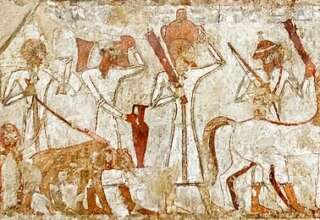
Energy
Mexico is the country with the world’s third-largest solar power potential. The country’s gross solar potential is estimated at 5kWh/m2 daily, which corresponds to 50 times the national electricity generation. Currently, there is over 1 million square meters of solar thermal panels installed in Mexico, while in 2005 there were only 115,000 square meters of solar PV (photo-voltaic) panels. Although Mexico has significantly increased its renewable electricity generation from wind and solar sources, it is still dependent on fossil fuels for the majority of its energy. In 2023 Mexico was in the top 15 highest greenhouse gas emitters, contributing over 5 million tons, or 1.4% of the global total. Mexico has committed to reducing greenhouse gas emissions by 35% by 2030, with an increased target of 40% conditional upon external support. The country also aims to cut black carbon emissions by 51% unconditionally and 70% with additional support by 2030 and has committed to net zero by 2050.
Tourism
As of 2017, Mexico was the 6th most visited country in the world. It had the 15th highest income from tourism in the world and the highest in Latin America. The vast majority of tourists come to Mexico from the United States and Canada, followed by Europe and Asia. A smaller number come from other Latin American countries. The coastlines of Mexico are rich in sunny stretches of beach. On the Yucatán peninsula, one of the most popular beach destinations is the resort town of Cancún. To the south of Cancún is the town of Tulum, notable for its ruins of Maya civilization. Other notable tourist destinations include Acapulco with crowded beaches and multi-story hotels on the shores. At the southern tip of the Baja California peninsula is the resort town of Cabo San Lucas, noted for its marlin fishing. In Mexican cities along the Mexico–United States border, the most lucrative hospitality industry is now medical tourism, with remnants of the traditional motivations that drove tourists to Mexico’s northern borderlands for nearly a century. Dominant medical tourism includes the purchase of medication, dentistry, elective surgery, optometry, and chiropractic.
Transportation
Despite its difficult topography, Mexico’s roadway is extensive and most areas in the country are covered. The roadway network in Mexico has an extent of 366,095 km (227,481 mi), of which 116,802 km (72,577 mi) are paved, making it 9th largest of any country. Of these, 10,474 km (6,508 mi) are multi-lane expressways: 9,544 km (5,930 mi) are four-lane highways, and the rest have 6 or more lanes. Starting in the late nineteenth century, Mexico was one of the first Latin American countries to promote railway development, and the network covers 30,952 km (19,233 mi).





